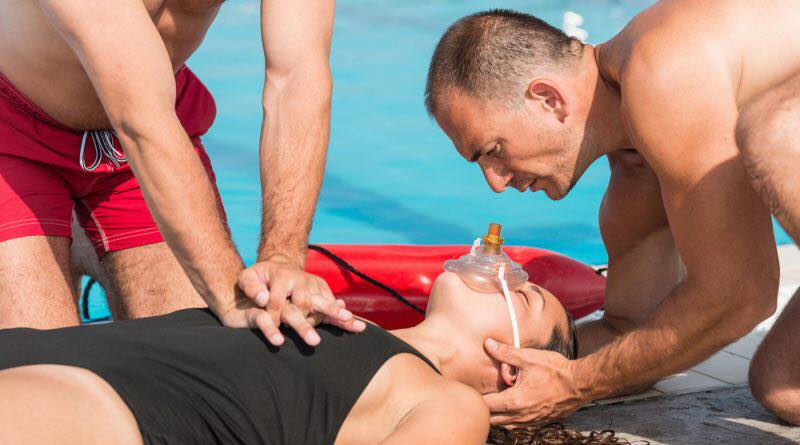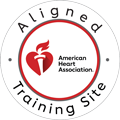A life can be saved with a simple action – but which CPR method should you use? Cardiopulmonary resuscitation, commonly known as CPR, is a vital skill for anyone to have. It can mean the difference between life and death during a cardiac emergency, especially when every second counts. CPR Kansas City, an American Heart Association (AHA) training site, offers valuable courses to help people learn and practice life-saving techniques.
There are two main types of CPR that people often hear about Hands-Only CPR and Traditional CPR. Each has its unique steps and best-use scenarios, and understanding these differences can help you act confidently and effectively during an emergency.

What is Hands-Only CPR
Hands-Only CPR is a simplified version of CPR designed to make life-saving actions easier and more accessible. With Hands-Only CPR, there are just two critical steps: First, call 911 to alert emergency services. Second, push hard and fast in the center of the victim’s chest. By performing these chest compressions, you help maintain blood flow to the brain and other vital organs, buying time until professional help arrives.
Hands-Only CPR is ideal for situations where an adult collapses suddenly in a public setting, such as a park or shopping mall. Studies have shown that this method is highly effective in the first few minutes of cardiac arrest, especially for adults who experience cardiac events due to heart conditions.
Since no mouth-to-mouth breathing is required, Hands-Only CPR is easier to learn and encourages more people to act in emergencies. For those who may feel unsure about performing traditional CPR, Hands-Only CPR provides an approachable alternative that still saves lives.
What is Traditional CPR
Traditional CPR, which involves both chest compressions and rescue breaths, is the more comprehensive method for delivering CPR. In Traditional CPR, you perform a sequence of chest compressions followed by rescue breaths. This method ensures oxygenated blood continues circulating through the body, which is crucial in emergencies involving respiratory issues.
Call Us Now
Get the Best CPR Class in Kansas City Today!
Traditional CPR is recommended in specific situations where more support is needed, such as with infants, children, or people who have drowned. Because young children and infants are more likely to experience respiratory arrest rather than cardiac arrest, the added step of rescue breathing is necessary to deliver oxygen directly to their lungs. Traditional CPR can also benefit people with respiratory issues or other medical conditions that may have led to an emergency.
Key Differences Between Hands-Only and Traditional CPR
The primary difference between Hands-Only CPR and Traditional CPR is the inclusion of rescue breaths in Traditional CPR. While Hands-Only CPR focuses exclusively on chest compressions, Traditional CPR alternates between compressions and breaths.
Each method has its ideal use scenarios: Hands-Only CPR is often used for adults in public settings, while Traditional CPR is better suited for children, infants, drowning victims, and individuals with known respiratory issues.
Hands-Only CPR is easier for the general public to learn and perform, as it eliminates the more complex step of rescue breathing. This simplicity increases the likelihood that bystanders will take action in an emergency.
In contrast, Traditional CPR requires more training and practice, but it provides a comprehensive response that may be necessary in certain cases. Both methods are effective for sudden cardiac arrest, but Traditional CPR’s inclusion of rescue breaths can be life-saving in emergencies where oxygen delivery is a factor.
When Should You Use Each Method
Choosing the right CPR method depends on the situation at hand. Hands-Only CPR is ideal for adults who suddenly collapse in public settings, where cardiac arrest is more likely to be related to a heart condition.
This method ensures continuous chest compressions, which is critical for maintaining blood flow until help arrives. For adults experiencing cardiac arrest without respiratory complications, Hands-Only CPR provides an effective and straightforward solution.
Traditional CPR should be used for children, infants, or drowning victims, as well as individuals with known respiratory conditions. When a child or infant collapses, it’s often due to breathing issues rather than heart problems, so rescue breaths are necessary to provide oxygen.
Drowning victims or those with respiratory problems also benefit from the added step of rescue breaths. Recognizing the specific needs of the situation and acting accordingly can make all the difference in a life-or-death emergency.
Why Training is Important
Understanding both Hands-Only and Traditional CPR techniques equips individuals to respond confidently and effectively in a variety of emergency scenarios. CPR certification classes at CPR Kansas City offer a comprehensive way to learn these skills in a supportive and hands-on environment.
With certified instructors guiding each step, participants gain the knowledge and confidence to perform CPR correctly and effectively.
Regular recertification is also essential to keep these skills fresh. CPR techniques and guidelines can evolve as new research emerges, so staying updated on the best practices is important for anyone who might find themselves in an emergency.
Whether you are new to CPR or looking to refresh your knowledge, training provides the preparation needed to take quick, life-saving action.
How to Get Certified in CPR
CPR Kansas City offers several courses to meet different certification needs, including Basic Life Support (BLS), Advanced Cardiovascular Life Support (ACLS), Pediatric Advanced Life Support (PALS), and combined CPR and First Aid.
Each course is designed to be stress-free, with a focus on hands-on learning to reinforce skills and build confidence. As an AHA-certified training site, CPR Kansas City provides high-quality training that equips individuals with skills backed by the latest medical research.
Becoming certified is a straightforward process, and CPR Kansas City makes it easy to schedule classes at a time that suits you. By enrolling in a course, you can be prepared to step in and potentially save a life when it matters most.
CPR Kansas City’s courses are open to anyone, whether you’re a healthcare professional or simply someone who wants to be prepared in emergencies.
Knowing both Hands-Only and Traditional CPR can make a crucial difference in a cardiac emergency. Each method has its strengths and ideal applications, and understanding when to use each one ensures you’re ready to help in any situation.
The training offered at CPR Kansas City provides invaluable skills, enabling you to act swiftly and confidently in emergencies. In a cardiac crisis, every second matters – get certified today and be ready to save a life.


